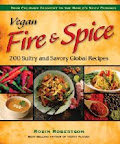A veggie pot pie can really be easy as pie. Made from items in your freezer and cupboard. And so delicious. Of course, put an old shoe in between two pieces of flaky crust and someone is bound to rave over it. Admittedly, the crust is not the healthiest food on the market, but there are some ways to reduce its effects.
For this veggie pot pie, start with the ingredients in the picture:
- bag of frozen "stew vegetables". Might be nice to get some that are not in huge chunks like these are but these do work.
- two frozen pie shells - vegan, of course (usually they are but not always) - you might want to choose whole wheat crusts if your grocer's freezer has them, for additional flavor and greater healthfulness.
- onion - or not, depends on your preferences - could also use frozen chopped onion
- mushroom or brown gravy mix, vegan. I didn't see any at my store, so I grabbed a can of sliced button mushrooms and some veggie broth instead, along with superfine flour (rice flour or regular wheat flour can substitute)
- soy-based vegan margarine
Not shown here: veggie seasoning. There are so many varieties of seasoning mixes out there. Go for flavors you love. I chose Spice Hunter's veggie grilling spice.
The steps:
Take the pie shells out of the freezer and separate. Let thaw a bit while you prepare the filling.
Preheat oven to 375 degrees.
Melt 1-2 Tbsp of margarine in a saute pan. Chop the onion (if using) and add to pan, cook over medium heat, stirring, until it starts to get translucent. Add in drained can of mushrooms (if using). Stir and cook about a minute.
Add 1 - 2 Tbsp of flour (fine flour or rice flour is nice for gravies). I used 2 Tbsp here. Mix together, cook for about 30 seconds. Add vegetable broth, about two cups, a little at a time, stirring until mixed and thickened each time.
Alternatively, make up a batch of brown or mushroom vegan gravy from a packet.
Dump in the bag of frozen vegetables. Stir to coat and mix together. Add a generous dollop of vegetable seasoning (shake it on) and mix it up.
Pour into one of the frozen pie shells. Invert the second shell over the first. If it is mostly thawed you should be able to pat it down gently over the mixture and seal the edges by crimping them. Poke some holes in the top with a sharp knife.
Bake for about an hour. Check after about 20 minutes. If the crust is already browned you can tear some aluminum foil and wrap it around the edges to keep the crust from burning. Look for signs of bubbling filling. After 30 minutes, reduce heat to 350 degrees.
It's so yummy you'll want others around to share it.
Variations:
* Use different mixes of vegetables. Add peas, corn, beans. If you use smaller pieces you can fit more in there and thus the ratio of good to bad (where "bad" is the oil in the crust) will increase. Add in fresh or frozen chopped bell peppers.
* Try a one-crust version. Pour the mixture into a pie pan and put a crust on top only.
* Use puff pastry - either as a full pie or smaller pockets.
* Use "chicken" vegan gravy.
